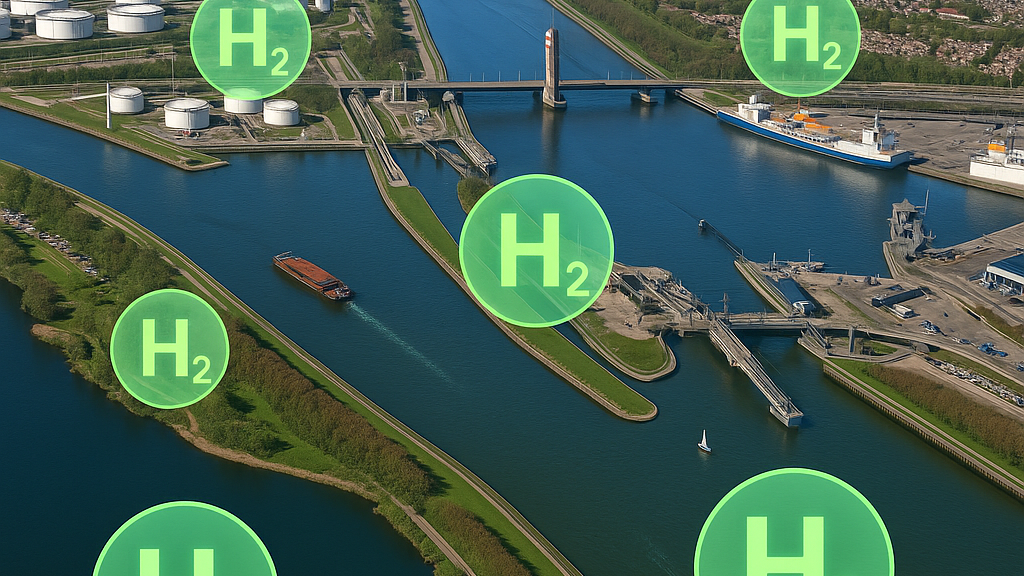Reflecting on the WHS 2025: A Pivotal Moment for Green Energy

Last week, BCM PR Consultant, Karen Large, had the privilege of attending the World Hydrogen Summit (WHS) 2025 in Rotterdam alongside our clients Johnson Matthey and InterContinental Energy (ICE). This year’s summit wasn’t just a gathering of experts – it was a declaration: the age of industrial-scale green hydrogen has arrived.
Here are Karen’s key takeaways from the event:
1. From Vision to Realism: The Maturing Hydrogen Sector
The hydrogen sector has rapidly moved from early hype to grounded execution. Alex Tancock, CEO of InterContinental Energy, framed this shift with refreshing honesty. While hydrogen’s potential is undisputed, it’s now about practical delivery, realistic economics, and bankable infrastructure.
ICE, with projects in Australia, Oman, and beyond, is embracing scale as a strategy. Its P2(H2)Node™ green hydrogen production architecture, likened to a “Microsoft Windows for hydrogen infrastructure,” is designed for modular, scalable deployment that slashes capital and operational costs by up to 20%.
2. Shipping and the IMO: Hydrogen’s First Major Offtake Market
Decarbonising shipping is surely one of the hydrogen industry’s most immediate opportunity. The recent IMO regulations are forcing shipping companies to transition to low-carbon fuels, and green ammonia is taking centre stage. ICE’s Western Green Energy Hub (WGEH) in Australia is targeting ammonia production at $650/tonne, which hits a price point that’s viable for maritime decarbonization.
Yet, a surprising disconnect exists and shipping and hydrogen sectors are still siloed. Hydrogen companies often speak in one echo chamber while shipping conferences occur in another. Integration between these ecosystems is urgently needed for real offtake traction.
3. Bridging Hydrogen’s Past and Future
One of the most insightful conversations during WHS came from a discussion with Johnson Matthey – a company that is playing a critical role in the hydrogen ecosystem.
JM highlighted a vital and nuanced point: while green and blue hydrogen dominate the public narrative, grey hydrogen remains the real backbone of today’s industrial world. From refining and fertiliser production to methanol and petrochemicals, grey hydrogen is still the incumbent and cleaning it up matters. Retrofitting SMR units with carbon capture isn’t just an option, it’s essential for continuity during the energy transition.
Johnson Matthey also drew attention to market hesitancy: industries stuck in limbo, unsure whether to invest in new tech or extend the life of existing grey infrastructure. The challenge isn’t just technological, it’s strategic. JM’s unique position as a technology supplier for both incumbent and emerging hydrogen production allows them to speak fluently across both worlds.
4. Rotterdam’s Vision: The Gateway of a Green Economy
WHS was aptly hosted in Rotterdam, a city visibly transitioning into Europe’s green hydrogen hub. The port is rapidly replacing oil infrastructure with hydrogen pipelines, electrolyser parks, and import terminals connected to a Europe-wide network.
The city’s leadership emphasised the social and economic dividends of this transition: jobs, innovation, and a new generation of industrial capabilities. Rotterdam, as the mayor eloquently put it, is “no longer just a fossil gateway, but the starting engine of a sustainable economy.”
5. Final Thoughts
The World Hydrogen Summit 2025 wasn’t just about announcements; it was about alignment. Between public and private sectors, producers and offtakers, innovators and implementers. For BCM, Johnson Matthey, and InterContinental Energy, the event reaffirmed that the green hydrogen future isn’t speculative anymore – it’s being built now.
“Let’s continue to drive this energy transition forward. Intelligently, collaboratively, and at scale.”
Click here to find out more about BCM Global Events PR Agency